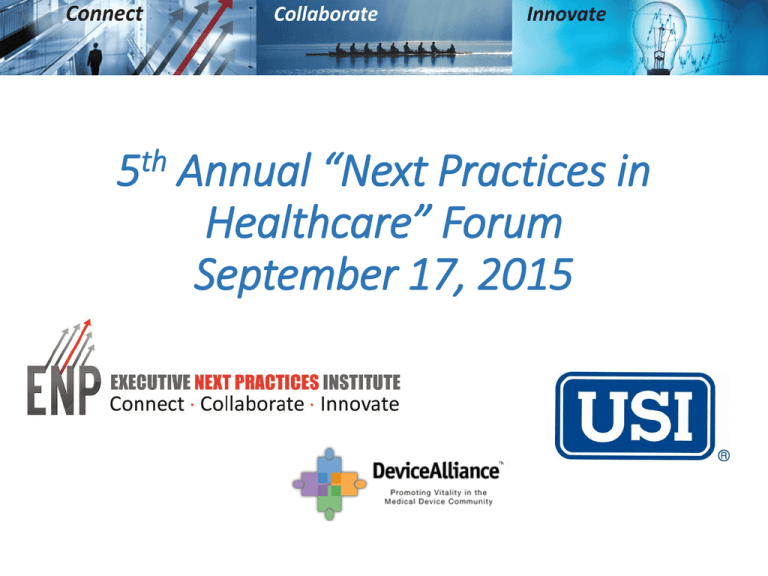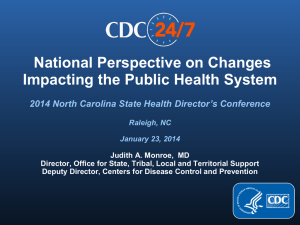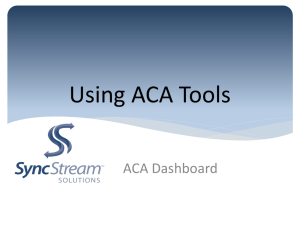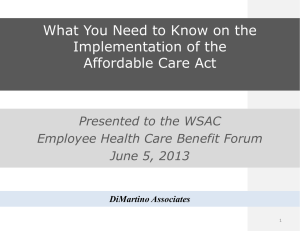
5th Annual “Next Practices in
Healthcare” Forum
September 17, 2015
.
People without Health Insurance
Dropped by 8.8 million last year
NYT Sept 16, 2015
Executive Next Practices Institute
.
Annual Memberships
Preferred Rates
Private Social Events
Alliance Partner Access
Event and Alliance Partners 2015
.
.
Welcome to our new partners!
Save The Dates
Nov 4 The Future of Work (OC & NYC)
Nov 6 The Recurring Revenue Summit (OC)
Dec 4 CEO Authors on Innovation & Next Practice
Awards
Jan 22 The New Employer-Employee Dynamic
Thank You USI!
.
.
Next Practices
Ideas, processes, concepts and
solutions that move you beyond
the “status quo”.
Not “how are others doing it best”
but rather, “where do we go from
here that represents a true,
fundamental shift in value”…
5 Steps to NEXT
• Articulate the mountaintop
• Optimal way, not legacy way
• Break it for breakthroughs
• Contextual IQ
• Engage and align for execution
1. Beyond Vision, to the Mountaintop
2. Optimal way
• op·ti·mal
• ˈäptəməl/
• adjective
• best or most favorable; optimum.
• "seeking the optimal solution"
3. Break it for Breakthroughs
4. Tap Your “Contextual IQ”
5. Align
Where are
we going?
Boardroom to
Loading Dock
Clarity
Table Collaborations
Develop your “next practices” based on the questions at your table
“Greenstorm”- push for innovative ideas, no constraints
Pick a recorder to summarize in bullet points – report out to the entire
room when asked
Give your notes to the ENP representative
Healthcare ’16: Beware of Taxes and Bright Shiny Objects
Healthcare is moving towards a tipping point…
In many states, self insurance is accelerating for employers over 100 employees as
the taxes, fees and risk charges associated with insured arrangements is now close
to 10%. Insurers will work hard to keep you insured by making it hard to get data.
The Cadillac Tax is still set to impact plans in 2018. Forecasts are close to $100B
in revenues raised impacting 70% of employer plans by 2023.. Will employers cut
benefits or pass on costs to employees? Government, tax payers and public
workers are heading towards an ugly show down over who pays.
Hospitals systems continue to consolidate and are moving toward risk based
contracts and a potential for direct provider contracting. Three delivery models
are likely to survive: Staff Model / Accountable Care Organizations (ACOs),
narrow EPO and PPO network ( gate keeper IPA and one flag ship provider
centered plans and high deductible health plans
Employers are increasingly interested in capping their liabilities through defined
contribution arrangements and a greater shift toward employee ownership of the
cost of access
© 2013 USI Insurance Services. All rights reserved.
1
23
Next Generation Strategic Planning Considerations
Alternative Treatment Modalities
Telemedicine
On-site clinics
Medical Tourism
Carve-Out Treatment Solutions
Prescription Drug
Radiology
Disease Management
Population Health Management
Wellness Incentives
Wellness Program Design
Use of Carrier
& Other Vendor Resources
Cost Transparency Tools
Decision Support Tools
Claims Data Management
Data Warehouse
Predictive Modeling
Benchmarking
© 2013 USI Insurance Services. All rights reserved.
20
24
Understanding Trends: Self Insurance
Insurers make three times the profit when an employer
chooses to fully insure benefits versus self insure…
In California, it is difficult for mid-sized employers to self insure due to
groups often splitting their population between PPOs and an HMO.
Insurers restrict self insurance to the PPO population and often will not
even provide loss experience, making a first year move to self insurance a
risky proposition.
Risk can be moderated and the cost of taxes, fees, margin and hidden
charges embedded in RX, reserves, administration and pooling can often be
as much as 15%.
Not all HMOs are fully capitated which means it could make sense to self
fund your entire account if a carrier will accommodate. Key is finding
carrier or TPA and renting carrier network.
With new community rating laws impacting employers in CA under 100
employees, it may not be feasible to self insure. However….
© 2013 USI Insurance Services. All rights reserved.
4
25
Understanding Trends: Accountable Care Organizations
Accountable Care Organizations Already Exist in So. Cal, They
are called HMOS…
The largest systems recognize the need to become fully integrated systems
offering primary care, sub-specialties and acute care to become a “medical
home for consumers to receive all services.
The need for critical mass and a range of services has led to a massive wave
of provider consolidations and a “toe in the water” by many systems to
begin taking on Medicare risk contracts. Very few systems have
successfully reduced costs to receive performance rewards
Insurers are launching value based reimbursement contracts where dollars
are withheld and only paid if outcomes improve. Current math is very
opaque for employers. Insurers like it this way.
Some of the best positioned systems ( e.g. Sutter Health ) are also some of
the highest unit cost providers. Does it make sense to send your employees
to the most expensive hospital system in your market. Yes, if they take risk!
© 2013 USI Insurance Services. All rights reserved.
4
26
Understanding Trends: Narrow Network Plans / EPOs
Narrow Network Plans have not caught on outside California
as consumers believe access is tantamount to quality. It is not
but its hard to explain that to your CEO’s partner…
Most public exchange plans across the U.S. are adopting narrow network
plans where a subset of doctors and systems have agreed to lower levels of
reimbursement in exchange for higher volumes of patients.
Commercial employers have attempted a weaker version of narrow network
plans by adopting EPOs and gate keeper based PPO plans. In many parts of
the U.S., open access PPOs still dominate.
Employers will never engage consumers until there is an economic
consequence for being a poor consumer of healthcare. A $2,000 overspend
on an MRI requires a 10% margin employer to generate $20,000 in
revenues to cover that poor point of service decision
© 2013 USI Insurance Services. All rights reserved.
4
27
Understanding Trends: High Deductible Health Plans
High Deductible Health Plans Drive Consumerism,
sometimes…
You’re a consumer when you are standing up and a patient when you are
lying down. Consumerism works for RX, outpatient and elective services
and mental health/substance abuse. Approximately 60% of claims can be
improved by an engaged consumer.
Consumer engagement tools are flooding the market. Firms like Compass
that offer concierge service support and price comparisons are increasingly
in vogue to first generation consumers
If a large percentage of employees are already in a staff model or lower cost
EPO/HMO, you must either insert a gatekeeper or a higher deductible to
force engagement
You have to accept the notion of a “ social contract” with employees around
health care.
© 2013 USI Insurance Services. All rights reserved.
4
28
Understanding Trends: Private Exchanges and Defined
Contribution Plans
A Private Exchange is a shiny object notion…Decision Support
Platforms that can engage and enroll employees are the
substance and core to a successful defined contribution plan
Retiree Medical exchanges have been a homerun. Employers wanted out of
defined benefit retirement plans and retirees loved getting on the phone
with a stipden to spend and an ombudsman to help them pick a plan.
First movers to private exchanges have been those who had to do
something ( ACA impacts on retail, hospitality ) and those who had low
high deductible plan penetration and wanted to drive major savings
Exchange is really a misnomer. Most will be single carrier, decision
support enrollment systems designed to engage employees, save money by
shifting workers to lower cost plans and ease employer administration
Eventually, all employers will likely cap the amount they subsidize for
healthcare due to Cadillac tax limits on deductibility and budgetary issues
© 2013 USI Insurance Services. All rights reserved.
4
29
Private Exchange – Facilitating Employee Consumerism
Defined Benefits
1.0
POS
$$$$
POS
$$$$
DENTAL
LIFE
Tailored Solutions
Benefits 2.0
LONG TERM
DISABILITY
© 2013 USI Insurance Services. All rights reserved.
VISION
DENTAL
3 OPTIONS
HMO 1
$$$
LIFE
10
OPTIONS
HMO 2
$$
LONG TERM
DISABILITY
3 OPTIONS
17
SHORT
TERM
DISABILITY
6 OPTIONS
POS HSA
$$
CRITICAL
ILLNESS
ACCIDENT
HMO HSA 1
$$
TELEMEDICINE
HMO HSA 2
$
WELLNESS
3 OPTIONS
PET
30
Understanding Exchanges: Who Can You Trust?
Private Exchange Leaders and Changelings
There are a number of Private Exchanges and Enrollment
Systems emerging with more expected to enter the
marketplace
Beware of consultants and brokers in Exchange clothing:
Many public firms have adopted exchanges and gotten an
uplift in their stock price. The expectation is they will transfer
clients to their platforms and have them as captive customers
paying higher admin fees. There will be channel conflict and
concern for clients as they seek objective advice. Liazon,
BenefitFocus, BSwift and Bloom are a few current leaders in
this rapidly-changing arena
Insurance carriers are aligning themselves with technology
platforms and the best advisors are increasingly agnostic to
platforms wanting instead to help the client find one that
works with them and their current HRIS
© 2013 USI Insurance Services. All rights reserved.
9
31
Strategy Drives Structure: What Problem Are You Solving?
Administration
Is complexity of
administration a problem?
Is employer seeking
to simplify benefit
administration or
outsource it?
What is the most ideal
set-up?
© 2013 USI Insurance Services. All rights reserved.
Choice
Does employer have a diverse
workforce demographically
and geographically?
How many
plan choices needed to meet
employees’ needs?
How many carriers/networks
needed based on locations?
Is there value in multiple
carrier choices in
same location?
10
Financial
Is cost driving the
decision to move to a
defined contribution
private exchange?
Is employers’ intent to cost
shift via private exchange?
What plan design offerings
and carrier strategy will drive
lowest cost and minimize
adverse selection?
32
Thank You.
34
How the ACA Drives
Innovation in Technology
& Funding Strategies
Denny Weinberg, CEO and Re-Imaginer
5th Annual Next Practices In Healthcare
Confidential and Proprietary. Presentation Sept 2015
The ACA Drivers
How the ACA
Drives Innovation
in Technology &
Funding
Strategies
•
•
•
•
•
•
Essential Benefits
Guaranteed Issue
Minimum Loss Ratio
ACO’s
Exchanges
Expanded Medicaid
The “ACA Reset”:
ACA Innovation: Technology & Funding
The ACA Reset
SUBTLE BUT SIGNIFICANT:
• Reimbursement Standardization
• Technology Conforms Care
• Big Patient Balances
• Churn Of Patients Among Insurers ?
• Consolidation of Providers and Insurers ?
• Deterioration of Employer Model ?
• Emergence Of The Consumer ?
ACA Innovation: Technology & Funding
The ACA Reset
STRUCTURAL IMPLCATIONS:
FACTORS
IMPLCATIONS
Reimbursement
Standardization &
Churn
1. Fewer Insurer Differences
Consolidation of
Providers & Insurers
And Conformed Care
2. Provider Brand Grows in Importance
Big Patient Balances
3. Payment Plans emerge
Emergence of the
Consumer
4. Consumer Becomes More Powerful
ACA Innovation: Technology & Funding
The ACA Reset
WHO WILL BE THE EARLY RESPONDERS::
• Care System Innovators Who Can Adopt
Technology And Understand All Consumers
• Technology Innovators Who Provide Common
Platforms For Consumers, And Care Providers
• Financing Innovators With New Approaches
• Employer Innovators Who Adopt Employee
Owned Plan Models
ACA Innovation: Technology & Funding
Where Are You?
Will you go be an innovator as a Consequence
of the later stage opportunities of the ACA?
As an employer
As a Provider
As a consumer
ACA Innovation: Technology & Funding
Confidential and Proprietary. Presentation Sept, 2015
42
Experts in making HR your competitive edge
Healthcare Forum
Employers Perspective and Realities in
Providing Healthcare Benefits
By
Mark Wilbur, President and CEO
Who We Are
Employers Group (EG) is a HR focused business association offering
nationally recognized expertise and resources, supporting and
empowering HR professionals to enhance and increase the HR
function’s performance while reducing risks in making day-to-day
critical decisions, making HR performance a competitive advantage.
EG is 119 years strong (1896)
Deeply experienced consultants with an Avg. of 27+ years of
experience
More than 70,000 Live Helpline calls handled annually
Serving members of all sizes, in all industries
Located across California ~ HQ in Los Angeles
Additional offices – Washington DC and Tokyo
More than 11,000 corporate members have leveraged EG over just
the last 10 years
Industries Served
Government
Transportation
& Distribution
Manufacturing
Financial &
Insurance
Services
Healthcare
& Wellness
Retail Trade
&
Consumer
Goods
Food,
Services,
Hospitality
Real Estate &
Construction
Energy &
Utilities
Oil & Gas
The Employer State of Mind Today
EG Has Helped Thousands of Employers Over the
Last Five Years Dealing With:
The worst recession to hit CA in decades – layoffs/cuts
A restructuring of employer benefits solutions - choices
Shifting healthcare costs to employees – creating gaps
Mesmerizing noise of choices for supplemental ins
During a time of tough cost-cutting in finance & HR
During a time of unprecedented increases in regulations
and compliance requirements from the NLRB, Fed and CA
Then comes ACA with numerous new layers of regulations,
requirements and implementation needs
Healthcare benefits choices, players and landscape
completely changes with new worries regarding new
potential taxes and penalties
The Employer State of Mind Today
EG Has Helped Thousands of Employers Over the
Last Five Years Dealing With:
Healthcare benefits choices, players and landscape
completely changes with new worries regarding potential
taxes and penalties
Exchanges – public vs private
Self-Insured, PPO, EPO, HMO – and the most popular called IDK!
“Upgrading” and restructuring of HRIS systems, online selection processes
Hyper growth in voluntary benefits offerings beyond traditional supplemental such as
Aflac, including health advocacy services, child/adult care services, virtual and concierge
health care, benefit carnivals, health assessments with incentives, personalized care
plans, shopping discounts/clubs programs and more
Endless industry movement (broker producer churn), disinformation, misinformation,
everybody has an exchange – endless FUD!
New frontiers – medical travel, onsite clinics, shared clinics, wellness programs with
incentives, supplemental alternatives, technology changes to projecting population
performance, benchmarking and assessment tools and on and on and on
Significant Issues & Impacts
Overwhelmed employers must address significant issues and
impacts to maximize performance and seize opportunities
Limited real understanding of employee healthcare and benefit
needs (measureable)
Limited real understanding of industry and competitor
benchmarking (measureable)
Severe gaps in communication to employees regarding total
rewards value of existing coverage, benefits
Consequently often generates unnecessary negative employee
assumptions regarding benefits and process
Implementing solutions out of crisis and compliance timing vs
strategically measuring, assessing and planning
Limited understanding of impact to employee recruiting and
retention
Significant annual enrollment communication confusion for
employees
Significant time impact to HR departments in effectively managing
workload with performance gaps in delivering other HR services
Designed Next Practices of the
Best Organizations
EG has worked with the best organizations in designing and advising in implementing completely new benefits strategies,
addressing alternatives, planning, selecting and executing healthcare and overall benefit solutions
Measure and benchmark your healthcare coverage offerings, voluntary and
additional benefits (total rewards) against competitors and industry
Survey employee benefits satisfaction, wants and needs to compare to
competitor and industry research
Conversion of stated burden to an advantage and opportunity
Develop a detailed HR calendar that incorporates a communication strategy
and plan with appropriate levels of education
Partner with vendors in communication, education and delivery
Better integrate an HR voice and presence in the C-suite strategic planning
and decision making
Many companies are now incorporating CHRO positions for a “seat at the table”
Outsource inefficient time absorbing, low value add, activities, such as LOA,
AAP, UI, Generic Training, etc.
Often generates cost savings or avoidance
Measure and understand pricing/value proposition and differences between
coverage alternatives, additional benefits, broker and administrator services
support and industry expertise.
Don’t ask for healthcare run off pricing each year from your broker – limited
impact
Thank You!
EG Services - Key Contacts
o
EG HELPLINE:
(800)-748-8484
o
EG REFERENCE LIBRARY:
Robert Campbell
(800) 748-8484 x 3930 rcampbell@employersgroup.com
Lisa Zaffina, UI Client Service Manager (claims admin)
(213) 765-3979
lzaffina@employersgroup.com
Suzanne Oliva, AAP Compliance Services Manager
(213) 765-3918
soliva@employersgroup.com
Juan Garcia, Organizational Research Services Director
(213) 765-3969
jgarcia@employersgroup.com
Megan Vallone, Research Services Administrator
(213) 765-3920
mvallone@employersgroup.com
Somaly Heng, Senior Manager of Learning Services
(213) 765-3962
sheng@employersgroup.com
Ken Tiratira, Executive Vice President, COO
(213) 765-3915
ktiratira@employersgroup.com
Mark Wilbur, President & CEO
(213) 765-3999
mwilbur@employersgroup.com
o
o
EG UI SERVICES:
o
o
EG AFFIRMATIVE ACTION PLANS:
o
o
EG RESEARCH AND SURVEYS:
o
o
EG SURVEYS/EOS:
o
o
EG TRAINING SERVICES
o
o
EG EMPLOYER ADVOCACY
o
o
o
EG EXECUTIVE LEADERSHIP
Institute Overview
September 18, 2015
prepared by
Mark W. Wilbur
Orthopaedic Institute for Children, Trustee
Michael Sullivan
Vice President, Foundation and Chief Philanthropy Officer
About Orthopaedic Institute for Children
•
Founded in 1911
•
Provides all pediatric orthopaedic care for UCLA Health System, including Mattel Children’s Hospital
•
Experiences 60,000 patient visits annually, and growing
•
Partner with Orthopaedic Magnet High School, offering underprivileged students hands-on internships and
scholarships
•
85% of our patients are uninsured or underinsured
•
Philanthropy sustains our mission
OIC Downtown Campus
OIC/UCLA Orthopaedic
Research Center UCLA Campus
OIC/UCLA Medical Center
Santa Monica
53
Prepared for Executive Next Practices Forum
Ambulatory Surgery Center Capital Campaign
$10
$9
$8
$7
The Challenge: Uninsured or underinsured children face long delays in
access to outpatient operating rooms
$6
$5
$4
$3
$2
Study: OIC conducted a study with teenagers who tore their ACL. They
were placed in two cohorts:
1.
2.
$1
Private Insurance (HMO/PPO)
Public Insurance (Medi-Cal)
Surgery is recommended about 30 days after a tear. Results showed
children with HMO/PPO health insurance treated at 30 days while
underprivileged children waited 90-120 days for the same surgery
Solution: Improve access for ALL children by building the region’s only
ambulatory surgery center specifically designed for treating pediatric
orthopaedic cases
Construction: OIC will now build an Ambulatory Surgery Center to be
opened in the spring of 2016
Prepared for Executive Next Practices Forum
Dodger legend Tommy Lasorda led the groundbreaking ceremony for new
surgery center. $6.6 million of $10 million goal has been raised to date
54
Bibiana – Amputee
O I C / U C L A I n t e r n a t i o n a l C h i l d r e n ’s P r o g r a m
•
Uninsured
•
Tanzania
•
Albino
•
Lost Parents to AIDS
•
Witch doctors paid attackers to amputate her leg, believing that
Bibiana spent 11 months in the hospital
after the attack
blood and bones of albinos create wealth. Younger sister, Tindi,
watched in horror.
•
OIC/UCLA coordinated all medical care and housing
•
Business partner donated prosthetic leg
•
Currently in our physical therapy program
•
100% Free Care
Tindi assists as Bibiana tests her new artificial leg
Prepared for Executive Next Practices Forum
55
Table Collaborations
Develop your “next practices” based on the
questions at your table
“Greenstorm”- push for innovative ideas, no
constraints
Pick a recorder to summarize in bullet points –
report out to the entire room when asked
Give your notes to the ENP representative
Question 1
(Tables 1, 8, 15) Do you have metrics in place to
measure your insurers and your consultant to
hold them accountable for performance? If not,
why not?
58
Question 2
(Tables 2, 9, 16) What do you plan on doing if
and when your medical costs eclipse allowable
expenses under the Cadillac Tax? Will you cut
benefits? Pass on costs to employees? Absorb
costs ?
59
Question 3
(Tables 3,10,17) Based on what you have heard,
how do you envision healthcare will change in
the next 3 years? Structure, focus and individual
impact?
60
Question 4
(Tables 4,11,18)) What will you personally look
forward to from technology that will make the
healthcare system overall run smoother and
allow you to forecast organization costs better?
61
Question 5
(Tables 5,12,19)What is the best approach for
achieving Better Health at Lower Cost for our
Orange County population?
• Healthy People
• High Quality Care
• Lower Cost of Care
62
Question 6
(Tables 6,13) What leadership role should our
business community play in supporting better
Health?
63
Question 7
(Tables 7,14) How will you keep your
organization current with the rapidly changing
healthcare landscape- for example—how will it
change talent recruitment and employee
retention?
64








